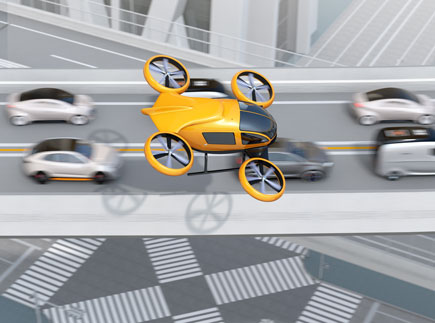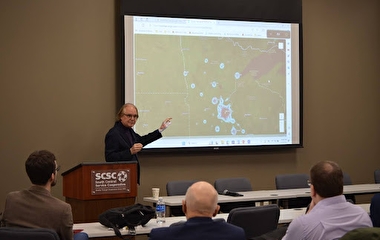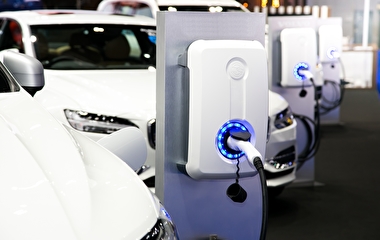Flying cars are typically regarded only as a fanciful staple of science fiction, but a recent graduate of the University of Minnesota believes they are closer to reality than we might think.
Zheyang Yuan earned master’s degrees in metropolitan design and architecture (advised by Professor Tom Fisher). As part of both degrees, Yuan began a project looking into the technology, infrastructure, public acceptance, and policy that will be necessary for electronic vertical takeoff and landing, or eVTOL, vehicles to become a viable form of public transportation.
“To safely introduce these fundamental changes to our transportation system,” Yuan says, “we need an orderly transition from experimental to commercial to the mainstream operation of eVTOLs.”
Around 80 different eVTOL models from various manufacturing companies currently exist in the US. The vehicles generally look and function similar to a scaled-up drone, with an electric battery powering one or more rotors. Depending on the model, they can fly 150–200 miles per hour, and they have a range of 50–200 miles. The models Yuan is interested in are autonomous and equipped with redundant sensors as required by the Federal Aviation Administration.
“Uber is the most ambitious in this field in the US,” Yuan says. The company plans to start demo flights for its Uber Air product in 2020 and limited commercial flights in 2023. Uber’s plans, however, are entirely urban, and Yuan thinks this strategy will have limitations.
“No individual company can afford to build the infrastructure network, or even a single component such as a ‘skyport’ building, that would be required to support this mode of travel,” she says. Uber’s initial budget for a single skyport—with all the necessary controls, landing pads, and user interfaces—is $65 million.
Affordability is also a public concern. In interviews with people of different physical abilities, ages, and incomes, Yuan found that “most of them can imagine the technology bringing more equity and mobility for the disabled, the elderly, and minority and rural communities—if it’s safe and affordable enough.”
Yuan’s project looks to the long term to solve the cost problem. With government help, she says, eVTOLs have the potential to eventually become a system of public transportation. She recommends shifting focus away from the cities—where public acceptance and regulations are likely to be messier—and instead focusing on the interface between cities and rural areas. Municipal airports could be retrofitted to function as skyports to save capital investment and make better use of underused public facilities.
“This new network would bridge rural areas with high unemployment and urban areas with unmet job vacancies,” Yuan says. “It could also revitalize rural areas by allowing urban companies to relocate from high-cost urban areas to areas with cheaper land and labor.”
None of this will happen quickly, however. Though the technology for eVTOLs is highly advanced, Yuan says, policy tends to move much slower. NASA is working on a five-year plan to develop a policy system for managing unmanned drones, and Yuan estimates it would take another five years for that policy system to be adapted to encompass passenger vehicles. From there, the technology could be used by bigger organizations like Mayo Clinic as a company vehicle, eventually transitioning into the public sphere by around 2040 as the system becomes more widespread and the cost of vehicles declines.
“Public transit is not a short-term thing,” Yuan says, “but in this way, regions playing various roles in Greater Minnesota could function more effectively as a system.”



